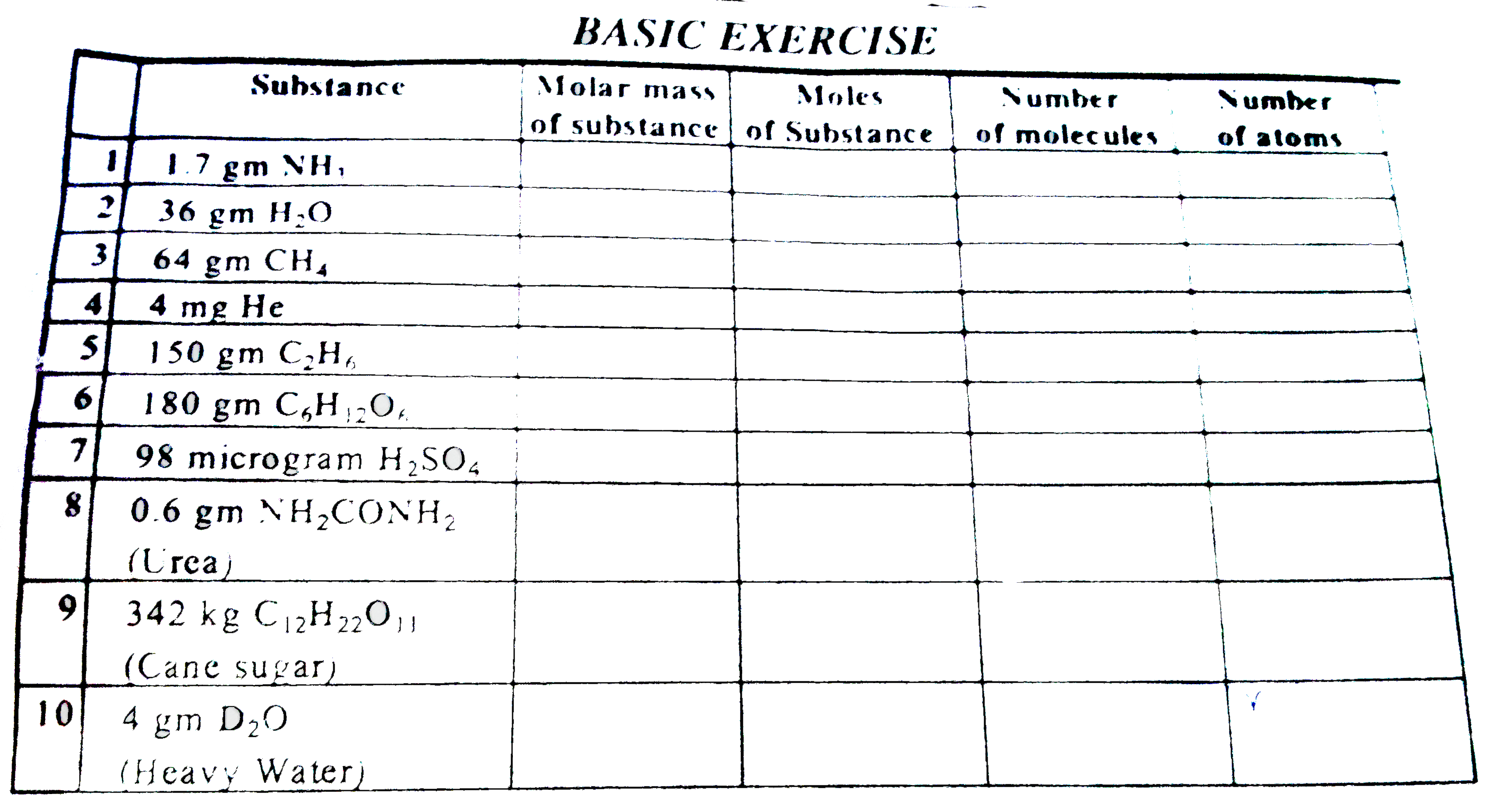In the reaction
4A+2B+3C→A4B2C3, what will be the number moles of product formed starting from one mole of A, 0.6 moles of B and 0.72 moles of C?
0.5
0.6
0.48
4.64
The correct Answer is:3
4A+2B+3C−−→A4B2C3Initial mole21.21.440final mole00.48
C is limiting reagent.
∴ moles of A4B2C3 is 0.48,
Topper's Solved these Questions
- TEST PAPERSBook:RESONANCE ENGLISHChapter:TEST PAPERSExercise:Pt-02
Explore 30 Videos
- TEST PAPERSBook:RESONANCE ENGLISHChapter:TEST PAPERSExercise:PT-03
Explore 28 Videos
- TEST PAPERSBook:RESONANCE ENGLISHChapter:TEST PAPERSExercise:Chemistry
Explore 701 Videos
- SURFACE CHEMISTRYBook:RESONANCE ENGLISHChapter:SURFACE CHEMISTRYExercise:Section - 5
Explore 1 Video
- TEST SERIESBook:RESONANCE ENGLISHChapter:TEST SERIESExercise:CHEMISTRY
Explore 50 Videos
Similar Questions
Knowledge Check
In the reaction A+B⇔C+D, 4 moles of A
react with 4 moles of B and form 2 moles each of C and D. The value of Ke for the reaction isA2B3C1D1.56
For the reaction A+2B→C, 5 moles of A and 8 mole of B will produce
View SolutionFor reaction A+2B→C. The amount of C formed by starting the reaction with 5 mole of A and 8 mole of B is :
View SolutionAtoms of elements A, B and C combine to form a compound in the atomic ratio of 1:6:2. Atomic masses of A, B and C are 64, 4 and 16 respectively. What will be the maximum mass of a compound formed from 1.28 g of A, 3×1023 atoms of B and 0.04 moles of C ?
View SolutionFor the reaction A+2B→C,5moles of A and 8moles of B will produce :-
View Solution
A→2B+C
3B→2D
Find moles of D produced if initially 3 moles of A are taken.
View SolutionThe reaction A →B follows first order reaction. The time taken for 0.8 mole of A to produce 0.6 mole of B is 1 hour. What is the time taken for conversion of 0.9 mole of A to produce 0.675 moles of B?
View SolutionWhat would be the heat released when 0.6 mole of HNO3 in solution is mixed with 0.4 mole of NaOH ?
View Solution